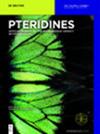新蝶呤/7,8-二氢新蝶呤分析对败血症和非败血症危重症患者氧化应激和免疫细胞活化的定量研究
IF 0.9
4区 医学
Q4 BIOCHEMISTRY & MOLECULAR BIOLOGY
引用次数: 3
摘要
摘要简介:新蝶呤和7,8-二氢蝶呤被用作氧化应激和炎症的生物标志物,但肾功能对这些测量的影响尚未被广泛探索。我们检查了重症患者的氧化应激、炎症和肾功能水平,并将其与没有败血症的等效患者进行比较。方法:选择34例重症监护患者,其中14例无脓毒症,20例有脓毒症。通过SAPS II、SOFA、APACHE II和III评分评估,两组的创伤程度相同。测定血浆、尿新蝶呤和总新蝶呤(新蝶呤+ 7,8-二氢蝶呤)值。结果:脓毒症患者与非脓毒症患者相比,尿和血浆中的新蝶呤和总新蝶呤在数天内显著升高。血浆新蝶呤和总新蝶呤与eGFR升高呈降低关系(p<0.008和p<0.001)。血浆/尿新蝶呤和总新蝶呤比值显示,eGFR对总新蝶呤通量的影响大于新蝶呤,差异分别为p<0.02和p<0.0002。结论:通过新蝶呤和总新蝶呤测量,脓毒症患者比同等创伤水平的非脓毒症患者存在更高水平的氧化应激和免疫系统激活。当通过尿新蝶呤测量获得炎症水平时,可能需要考虑eGFR。本文章由计算机程序翻译,如有差异,请以英文原文为准。
Oxidative stress and immune cell activation quantification in sepsis and non-sepsis critical care patients by neopterin/7,8-dihydroneopterin analysis
Abstract Introduction: Neopterin and 7,8-dihydroneopterin are used as biomarkers of oxidative stress and inflammation, but the effect of kidney function on these measurements has not been extensively explored. We examine the levels of oxidative stress, inflammation and kidney function in intensive patients and compare them to equivalent patients without sepsis. Methods: 34 Intensive care patients were selected for the study, 14 without sepsis and 20 with. Both groups had equivalent levels of trauma, assessed by SAPS II, SOFA, and APACHE II and III scores. Plasma and urinary neopterin and total neopterin (neopterin + 7,8-dihydroneopterin) values were measured. Results: Neopterin and total neopterin were significantly elevated in urine and plasma for multiple days in sepsis versus non-sepsis patients. Plasma neopterin and total neopterin have decreasing relationships with increased eGFR (p<0.008 and p<0.001, respectively). Plasma/urinary neopterin and total neopterin ratios demonstrate that total neopterin flux is more influenced by eGFR than neopterin, with significantce of p<0.02 and p<0.0002 respectively. Conclusion: Sepsis patients present with greater levels of oxidative stress and immune system activation than non-sepsis patients of equal levels of trauma, as measured by neopterin and total neopterin. eGFR may need to be taken into account when accessing the level of inflammation from urinary neopterin measurements.
求助全文
通过发布文献求助,成功后即可免费获取论文全文。
去求助
来源期刊

Pteridines
生物-生化与分子生物学
CiteScore
1.20
自引率
25.00%
发文量
6
审稿时长
>12 weeks
期刊介绍:
Pteridines is an open acess international quarterly journal dealing with all aspects of pteridine research. Pteridines are heterocyclic fused ring compounds involved in a wide range of biological functions from the color on butterfly wings to cofactors in enzyme catalysis to essential vitamins. Of the pteridines, 5,6,7,8-tetrahydrobiopterin is the necessary cofactor of several aromatic amino acid monoxygenases, the nitric oxide synthases and glyceryl ether monoxygenase (GEMO). Neopterin plays an essential role in the immune system and is an important biomarker in laboratory medicine for diseases such as HIV, cardiovascular disease, malignant tumors, among others.
Topics:
-Neopterin, dihydroneopterin, monapterin-
Biopterin, tetrahydrobiopterin-
Folates, antifolates, riboflavin-
Phenylalanine, tyrosine, phenylketonuria, serotonin, adrenalin, noradrenalin, L-DOPA, dopamine, related biogenic amines-
Phenylalanine hydroxylase, tyrosine hydroxylase, tryptophan hydroxylase, nitric oxide synthases (iNOS), alkylglycerol monooxygenase (AGMO), dihydropterin reductase, sepiapterin reductase-
Homocysteine, mediators of inflammation, redox systems, iron.
 求助内容:
求助内容: 应助结果提醒方式:
应助结果提醒方式:


